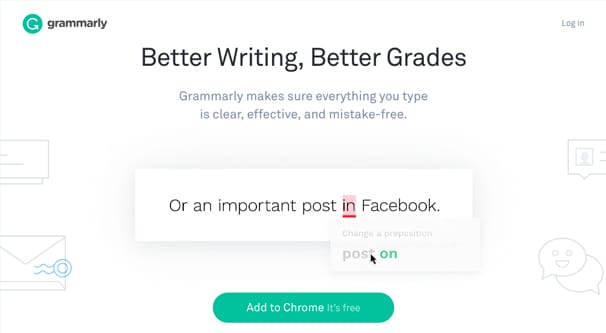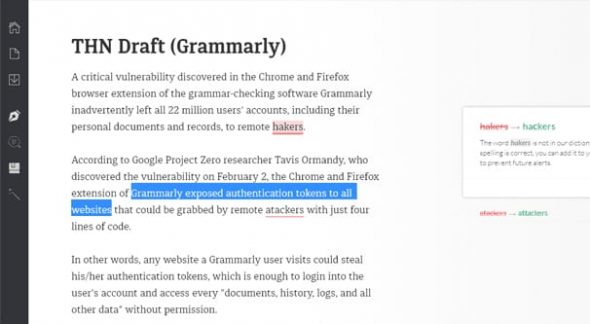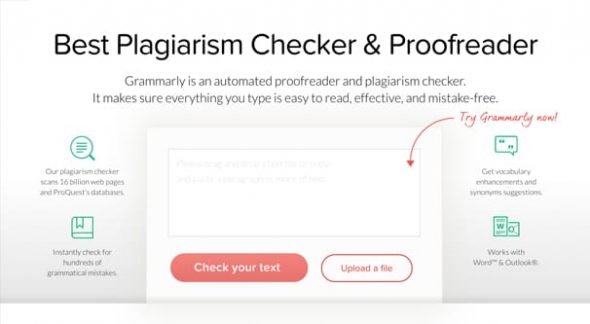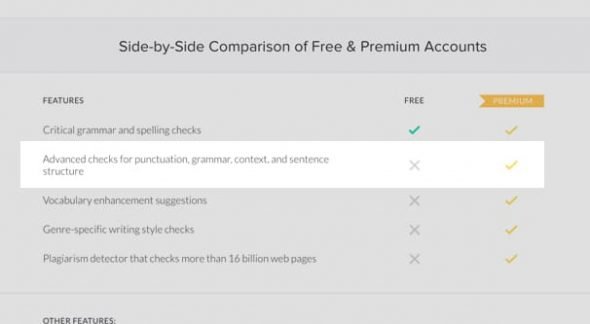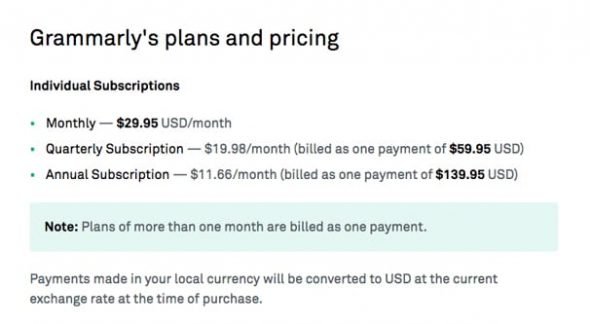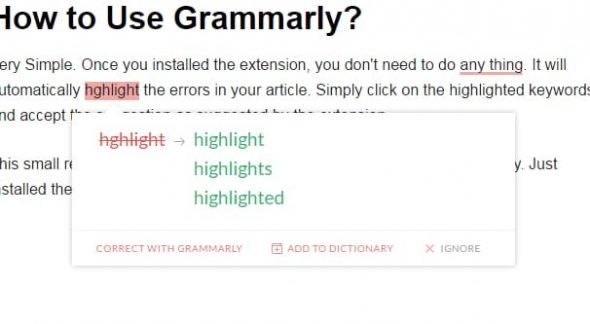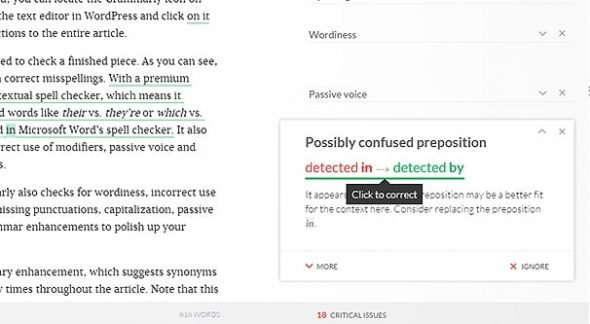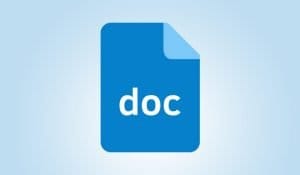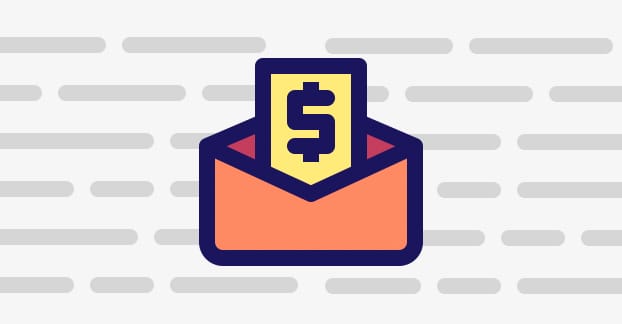Whenever you’re writing anything for publication, it’s well worth the time to make sure your writing is as consistently high quality as possible. In some cases, this means a dedicated proofreading. In some cases, it means cranking up all of the grammar settings in the program you’re using to write. In some cases, it’s best to let a third party tool take over. This applies regardless of whether you’re writing blog posts, guest posts, copy for landing pages, or even just copy for ads.
One such tool you could potentially use is Grammarly. They’re one of the bigger names, as far as grammar checks go. What features do they offer, and is it worthwhile to pay for the premium version, or should you stick with the free plan?
What Grammarly Offers
In an abstract sense, what Grammarly offers is peace of mind. With it, you can be confident that you’re putting your best foot forward, as far as your written communication through channels Grammarly is able to watch.
Yes, that’s right: communication. Grammarly works for things like guest posts and pitches, but that’s just a fraction of its power. If all you used it for was a replacement for Microsoft Word’s built-in grammar check, that would be fine. However, you can use Grammarly in a variety of other channels, including browser-based email clients and to proofread any document you can run through its app. Grammarly has a browser extension, a native app, and an add-on for MS Office and Outlook. They have a similar app for Apple devices too, so don’t feel left out if you’re not a Windows user. On top of all of that, they have apps for both iOS and Android.
Grammarly also has a free online and browser-extension-based plagiarism checker. This tool is up there with Copyscape in terms of being able to find copies of your content online. It’s great for making sure you haven’t accidentally submitted a pre-written guest post twice. It’s also great for double-checking to make sure your hired writers aren’t submitting stolen or duplicated content. The plagiarism checker also runs the content through a grammar check as well, for both proofreading and “writing enhancement” options.
You do have to sign up for a free account if you want to see the results of the tool’s scan, by the way. You can see a simple yes/no answer for whether or not it finds plagiarism, and an itemized list of errors, but not what triggered any of them if you don’t have an account.
All of the above is free, so what do you get for the premium upgrade?
First of all, Premium gives you extended descriptions and explanations of the changes they recommend. They’ll tell you whether something is a technical error or a style change, and if it’s a style change, why they think it should be changed.
Personally, as a professional writer with several active blogs, I don’t find most of the style recommendations all that helpful. I’ve developed my own style, and a lot of their recommendations draw away from that style. Sure, they’ll find plenty of errors sometimes – not even professional writers are immune to typos – but style changes aren’t as useful for me personally. That said, it’s extremely helpful for anyone with English as a second language. Their recommendations are excellent both for helping content sound more fluent, and helping learn what common errors you make.
Premium also has a larger library of potential errors it will point out and fix for you. To me that’s a little shady, making the free tool less effective rather than simply technically limited in some way, but hey; if that’s how they have to sell it, that’s how they have to sell it.
One of the nice things about Grammarly Premium as a tool is that you can adjust it to match the intent of your writing. When you adjust the purpose of your writing, it adjusts the kinds of recommendations it offers. You know that a landing page has a different style of persuasive copy than a newsletter, which is different and more informal than a blog post, which itself is less formal than a press release.
With Grammarly, you can choose to tweak the intent of the piece, the audience you’re aiming for, the style, the emotional impact, and what kind of domain you’re writing for. I don’t mean web domain here, I mean whether it’s an academic setting, a business setting, a technical document, or what have you.
This, frankly, is the main reason you should use Grammarly instead of native grammar checks built into your writing app of choice. Smart suggestions help you with style and tone, rather than just technical accuracy.
Here’s the problem: Grammarly premium is pretty expensive. The price changes depending on how you’re billed, as with many of these kinds of apps. Monthly billing is $30 per month. Quarterly billing is $60, or $20 per month. Annual billing is $140, or about $12 per month. This isn’t THAT expensive, as far as business apps go, but for something that you’re guaranteed to have at least one free tool to do for you, it’s asking a lot.
On the plus side, Grammarly has a Business plan that allows 3+ users and will run you $10 per user per month. That’s a pretty reasonable price for a small team of people who need to be writing content for your website or frequent communication with people outside of your business.
The Limitations of Grammarly
Any mechanical tool aimed at doing anything with language is, by necessity, going to be questionable. English in particular is a very fickle language with a billion little caveats to every rule. I mean, remember “I before E except after C?” It’s a fine little rule, though it’s neither entirely accurate nor do we deign to allow its being to reign over policies… alright, that sentence is tortured for an example, and I’m sure Grammarly hates it. The fact is, every rule in grammar tends to have a list of exceptions.
Often times as writers we need to make decisions; do we want to adhere to the rules or express ourselves? A lot of the recommendations Grammarly suggests come down to following the rules, and they don’t always explain themselves all that well. Sometimes you have a personal style you have developed, and it becomes characteristic of your writing. You might have even noticed some common “errors” in my own writing, if you’ve read this blog long enough; they’re usually not errors, but rather a form of my own style.
Here’s the thing about language: as long as you get your point across with minimal confusion, you are successful at communicating. It doesn’t matter if you make up a word that wasn’t really a word before. Hell, that’s what Shakespeare did. As long as your meaning comes across to the majority of your readers, you’re communicating just fine. Modern grammar rules change from time to time, though perhaps not as often as they should. Modern dictionaries add words and new definitions for old words all the time.
No mechanical tool is going to be able to successfully interpret language and determine if it’s being used effectively. For that, you need a very knowledgeable, trained human who is both fluent in your language, highly aware of the rules of grammar, and aware of your particular goals with your writing.
A human editor, specifically one that you work with frequently, is going to be virtually invaluable. Of course, they’re also likely going to be expensive. Editors for books can run anywhere from $2 per page up to $10 or more. When a “page” is defined as around 250-300 words, even a simple blog post ends up costing a pretty penny. A full-length book, with full developmental editing (rather than simple proofreading) can run you anywhere from $800 to $10,000.
Grammarly understands that their tool is of limited use, particularly to fluent native speakers, so they have an option on the dashboard to send your content to a human editor. Their pricing for that human editor is two cents per word. For my typical 2,000-word blog posts, that means I’d be paying about $40. With ~52 blog posts per year, that’s an additional $2,000 expense just for blogs. Add in all of the other possible types of content I could want copy-edited and you can double that number.
When Grammarly is Effective
Grammarly is effective in a few scenarios, and less so in others.
First of all, if you’re typically writing in a setting where you don’t benefit from native grammar checks, it can be worthwhile to run your content through Grammarly to double-check for errors. The mobile apps in particular are useful for this, if you find yourself writing copy on a tablet while on the train in the morning, or something similar.
Secondly, Grammarly can be a very useful learning tool. After about a year of use, you will have noticed a lot of common errors you find yourself making. Maybe you misuse passive voice a lot. Maybe you end sentences with prepositions all the time. Maybe you have a few common adjectives you misuse. Grammarly can act as a teacher, by pointing these out every time you make the mistake. Eventually you learn to recognize the mistake as you make it and fix it then and there. Of course, at that point, the utility of Grammarly drops, and you might decide to cancel your subscription.
Third, Grammarly is incredibly good for any non-native or non-fluent speaker who wants to appear closer to native. I’ve read a lot of content by non-native English speakers who have learned to write 99% fluently, and the occasional mistake still stands out, but it’s hard to tell they aren’t fluent.
Unfortunately, on the English internet, ESL tends to be fairly detrimental. There have been so many ESL scams and spammers over the last decades that it has become something of a flag for “this content isn’t trustworthy.” If you can eliminate the worst ESL mistakes and come across as much more fluent, you can remove that barrier.
Grammarly is also good for a quick proof-read on shorter pieces. Passive checks via the browser plugin, in your email and other communications, can be useful to keep you from making terrible mistakes.
Grammarly is also excellent for “localization” of content. There are a lot of minor differences between, for example, British and American English. Using s instead of z, using re instead of er, and so on. You can tell Grammarly which target you want, and it will point out errors that are correct in one but incorrect in your goal.
Like all spelling and grammar checks, Grammarly will occasionally miss errors. I’ve intentionally made errors that have slipped through, because they’re technically correct but not truly correct, in terms of modern usage. They’re pretty good about catching almost everything, though, so don’t feel too bad if something slips through.
The Bottom Line
Grammarly is a good tool. I recommend installing the free browser extensions and checking it out for a while. See if it feels worthwhile for your own workflow.
Paying for Grammarly is a good idea if you find that it’s consistently pointing out a lot of errors you need fixed. It’s also a good idea if you have a team and want a more consistent quality of communication, if you can swing the business plan.
I wouldn’t use Grammarly as the sole proof-reading tool for a large book or e-book, nor would I pay for their human editors. In those cases, it’s worthwhile going to Upwork or your favorite freelancer hub and finding a professional editor.
 ContentPowered.com
ContentPowered.com
